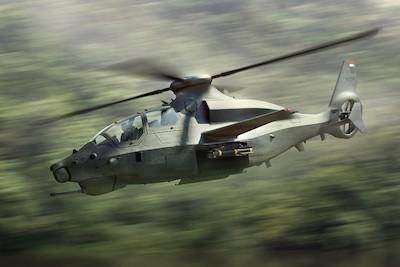Sun, Feb 11, 2024
Ukraine War Shows Little Room for Delicate Manned Aircraft in Close-Range ISR Roles
The US Army has announced the elimination of Future Attack Reconnaissance Aircraft, putting to rest a light scout helicopter that was hoped to replace Bell's OH-58 Kiowa.

The OH-6 has officially outlasted just about every one of its challengers, despite decades of prospective replacement from 'big Army'. The Kiowa entered service as a light, agile, single-engine helo in Army service, a sibling to the Bell JetRanger 206A. Successive enhancements to the type kept the Kiowa in service through most of GWOT, only being retired from service entirely after years of mothballing and selective retirement for older, more tired airframes. In its place, the Army had accepted the use of the much larger, heavier, and pricier AH-64 Apache for its direct fire missions, and the use of uncrewed aircraft for scouting purposes. The Future Attack Recon Aircraft program kickstarted development on the Bell 360 Invictus and Sikorsky Raider X. The Future Long Range Assault Aircraft program continues, ensuring that the tiltrotor V-280 Valor lives to see another day.
While much of the cancellation was based on the funding required to keep up expensive, shiny new equipment for the future procurement pipeline, there's a sort of hard-bit understanding around Army water coolers: UAVs are the future, particularly in ISR roles. The war in Ukraine has taught planners that a light, agile little helicopter is still far too slow a target when it's forced to haul a few personnel inside, so the best way to save money and lives is to put the drones in the light helo's place.
Army Chief of Staff Randy George said that the service will conclude prototyping on the program at the end of fiscal year 2024, allowing manufacturers to learn as much as possible from what they've completed already. "Aerial reconnaissance has fundamentally changed,” said George. “Sensors and weapons mounted on a variety of unmanned systems and in space are more ubiquitous, further reaching, and more inexpensive than ever before."
More News
From 2023 (YouTube Version): Legacy of a Titan Robert (Bob) Anderson Hoover was a fighter pilot, test pilot, flight instructor, and air show superstar. More so, Bob Hoover was an i>[...]
Get The Latest in Aviation News NOW on Instagram Are you on Instagram yet? It's been around for a few years, quietly picking up traction mostly thanks to everybody's new obsession >[...]
Aero Linx: B-52H Stratofortress The B-52H Stratofortress is a long-range, heavy bomber that can perform a variety of missions. The bomber is capable of flying at high subsonic spee>[...]
Altimeter Setting The barometric pressure reading used to adjust a pressure altimeter for variations in existing atmospheric pressure or to the standard altimeter setting (29.92).>[...]
"Knowing that we play an active part in bettering people's lives is extremely rewarding. My team and I are very thankful for the opportunity to be here and to help in any way we ca>[...]
 Classic Aero-TV: Remembering Bob Hoover
Classic Aero-TV: Remembering Bob Hoover ANN FAQ: Follow Us On Instagram!
ANN FAQ: Follow Us On Instagram! ANN's Daily Aero-Linx (05.15.24)
ANN's Daily Aero-Linx (05.15.24) ANN's Daily Aero-Term (05.15.24):Altimeter Setting
ANN's Daily Aero-Term (05.15.24):Altimeter Setting Aero-News: Quote of the Day (05.16.24)
Aero-News: Quote of the Day (05.16.24)



